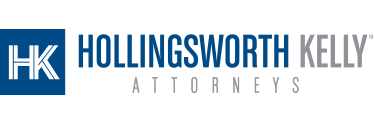Auto Insurance: Are You Covered?
When we ask potential new clients about their own auto insurance, they usually assure us they are “fully covered.”
Unfortunately, most motorists have never taken a hard look at their policy to determine just how much auto insurance coverage they really have. The Declarations Page included in your auto policy renewal outlines your policy limits for both bodily injury and property damage. To help you understand the insurance terms listed on your Declarations Page, see Auto Insurance Terms.
In Arizona, the minimum insurance liability requirement for vehicles is $15,000 per person, $30,000 per occurrence. Unfortunately, we see many accidents where the at-fault driver has either no insurance or the minimum $15,000/30,000 required by law.
This means that if you are seriously injured in an accident, the at-fault driver may not have any or enough coverage to adequately compensate you for your injuries and damages.
For the purposes of protecting yourself in the event of an auto accident, we recommend that you carry as much coverage as you can reasonably afford. If at all possible, you should carry at least $100,000/$300,000 policy limits for Liability, Uninsured (UM) and Underinsured (UIM) motorist coverage. Depending on your individual situation, Medical Payments (Med Pay) should be at minimum $5,000.
If, however, you can afford higher policy limits, by all means you should increase these amounts. For example, if you have assets to protect, or if you are self-employed, you may want to increase your Liability coverage, and possibly add an umbrella policy. UM and UIM coverage should match your Liability policy.
Please keep in mind that your insurance company may not sell you higher UM/UIM coverage than your Liability limits. Some people think it is a good idea to save money by obtaining less UM/UIM coverage, however, than their Liability limits. That would be like insuring everyone else for less than you insure yourself. UM/UIM is specifically for you and others in your vehicle, not for the person who hits you.
For Property Damage, we recommend at least $50,000 in Liability coverage. Comprehensive and Collision coverage will depend on your deductible. The higher your deductible, the lower your premium.
Comprehensive and Collision is required by a lender if you’re making payments on your vehicle. Also consider adding Gap Insurance to your policy if you have an outstanding balance on your vehicle. If your car is totaled in an auto accident and you’re not at fault, the insurance company is only obligated to pay you fair market value for your vehicle, which more often than not will be less than what you owe the lender. Gap insurance will bridge the amount between what the insurance company paid you for your car and what you still owe on the loan.
This information is provided by the Hollingsworth Kelly to help you select the right coverage for your auto insurance needs. All too often, we see people who are injured by someone who does not have adequate insurance coverage. All insurance decisions should be discussed with your auto insurance agent so that you can make an informed decision to best suit your needs. This information is not intended to serve as legal advice.


